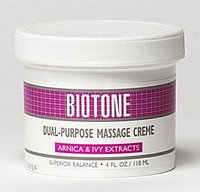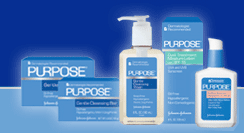"PURPOSE" and "DUAL-PURPOSE MASSAGE CREME" Confusingly Similar, Says TTAB
In a decision that may make the TTABlog's "Ten Worst" list for 2006, the Board sustained an opposition to registration of the mark DUAL-PURPOSE MASSAGE CREME for "massage creme," finding the mark likely to cause confusion with the registered mark PURPOSE for moisturizers. Johnson & Johnson v. Natural Thoughts, Inc., Opposition No. 91122373 (January 10, 2006) [not citable].

The Board began by noting that MASSAGE CREME is a generic term for Opposer's goods (although the Examining Attorney did not require a disclaimer). It found the involved goods to be related, based in part on Applicant's own advertising indicating that moisturizing is one purpose of its creme. Because the identification of goods in the application has no limitation on channels of trade, the Board assumed (as it must) that the goods are sold in all normal channels (and not just the specific channels urged by Applicant). Moreover, J&J submitted evidence that moisturizers and massage creams are sold in some of the same retail outlets (both brick-and-mortar and virtual). The Board also assumed that, since massage creams are found in general retail stores, Applicant's goods may be purchased by ordinary consumers, not just by professional massage therapists (as argued by Applicant).

Turning to the marks, the Board found PURPOSE to be not a particularly strong mark. Evidence of third-party use of the word "purpose" as part of their product brand names "suggests that the public distinguishes between various marks containing this word by looking to other distinctive parts of those marks."
Because MASSAGE CREME is generic and "has no source-indicating value," the Board gave "greater weight to the DUAL-PURPOSE portion of applicant's mark" and concluded that the marks "are similar in commercial impression, and this factor favors opposer."
"... there are obvious visual and phonetic similarities. With respect to the connotations of the marks, there are certain differences, in that DUAL PURPOSE can be viewed as having a meaning of two aims or functions, while the word PURPOSE per se has meanings in addition to goals or aims, e.g., 'determination,' 'resolution.' Overall, however, we do not find these differences, and especially the addition of the word DUAL, which if not descriptive is, at the very least, highly suggestive, to be sufficient to distinguish applicant's mark from the mark PURPOSE."
Applicant's contention regarding lack of actual confusion during the 18 years of contemporaneous use of the subject marks served no purpose. "[T]his is likely due to the limited trade channels in which applicant's goods are actually sold, and the specialized group of customers to which it actually markets its goods." The application at issue is not so limited.
Finally, the Board noted that "any doubt on the issue of likelihood of confusion must be resolved in favor of the prior user and registrant."
TTABlog comment: Is the American consumer so dumb that she or he would find these two marks confusingly similar? It seems to me that the Board's analysis of these marks is seriously flawed. The marks must be compared in their entireties: the public doesn't know which words have been (or should have been) disclaimed in the PTO, nor will it reason that the word DUAL is suggestive or descriptive and therefore ignore it. The Board found that the mark PURPOSE is not particularly strong in light of third-party uses, and that the public has been able to distinguish between other marks containing the word "purpose." [In those cases, the public purportedly would look to other "distinctive" portions of the marks.]
Here, the word PURPOSE by itself does not, in my opinion, create the same commercial impression as DUAL PURPOSE MASSAGE CREME. The former is a vague, non-descriptive term thought up by some advertising agency; the latter is a down-to earth "trademark." Maybe the applied-for mark as a whole is descriptive, but it certainly is distinctive from PURPOSE.
TTABlog note: The Board sustained Applicant's objection to the propriety of J&J's rebuttal testimony regarding "whether personal care products that include massage products, and skin care products, are sold under the same brand." The Board found that the testimony should properly have been part of J&J's case-in-chief.
Text Copyright John L. Welch 2006.




0 Comments:
Post a Comment
<< Home